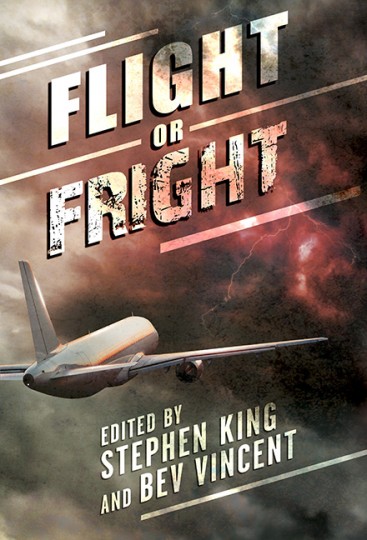[April 2007] Every now and then someone makes a simple observation that causes me to rethink the way I work. Just when I think I’ve got a handle on this writing thing, I realize I’ve been overlooking something so patently obvious that I wonder why I didn’t come up with it on my own.
Here are a few paragraphs from a novel I wrote seven years ago:
Cherry Tree Drive described a meandering arc that connected two intersecting streets. Number 40 was on my right, directly across from a cul-de-sac. Several tall oak and sweet gum trees grew in the front yard, their thick clusters of leaves providing natural seclusion, obscuring the front of the house. Rows of crepe myrtles formed barriers against the neighbors on both sides. A concrete path led from the driveway around the corner of the double garage and up to a small porch.
Low-maintenance plants filled the flowerbeds next to the driveway. The neatly trimmed lawn was a healthy green, a major feat after the dry summer we’d experienced. Across the street, a neighbor’s sickly brown lawn looked burnt after being clipped too short. It probably hadn’t seen water in months.
A conspicuously official unmarked car occupied the driveway. As I collected my equipment from the trunk, curtains fluttered in the window of the house where I had parked. Someone was keeping watch.
Not exactly scintillating prose, I admit, but I was just starting out, and determined to be descriptive. You might have a pretty good mental picture of the front yard of this suburban house. And yet, something is missing.
Can’t quite put my finger on it.
If I tilt my head to one side, I hear nothing.
If I breathe in a lungful of air, it has no smell.
If I lick my lips, I can’t quite taste it.
Yes, the above description is entirely visual. It’s like a hidden camera was recording everything—the all-seeing eye—with the sound turned off. Determined as I was to immerse the reader in this setting, I forgot about four-fifths of the senses. Were the mocking birds twittering in the trees? Could the narrator hear the sound of rubber against concrete as cars passed on the street? Were there children laughing/crying/shrieking as they played in neighboring yards? Dogs barking on the other side of the fence?
Did the crepe myrtles fill the air with their nectar? Did the humid Texas air wrap the narrator up with a glove of warmth when he emerged from his car? When he knocked on the door a few seconds later, was the wood rough against his knuckles?
The man who taught me this was David Morrell. He gave an abbreviated version of his writing workshop at the Stoker weekend in L.A. a couple of years ago. I was late getting back to the convention hotel after a signing event at Dark Delicacies, and I went straight to the ballroom where he was speaking. I missed over half the workshop, but what I gleaned from the bit I did catch was worth its weight in gold.
We have become accustomed to primarily paying attention to two types of stimuli—sight and sound—because so much of our entertainment comes to us via the screen, large or small. In this medium, the other three senses are inaccessible, for the most part. A character on TV can allude to a strange smell or react to an objectionable touch, but when he does the audience generally doesn’t share the sensation. The camera creates too much distance for such intimacy.
We have the entire sensory palette at our avail, but we don’t always take full advantage. We close our eyes to imagine a situation and we see—and sometimes we hear—but it takes practice to teach ourselves to engage the other senses.
Even our traditional sayings contribute to this bias against the “lesser” senses. A picture is worth a thousand words, we say—but when we look at a picture, do we only see? Under the right circumstances, photographs conjure up scents and sounds. If I see a photo of lemon meringue pie, my tongue reacts to the remembered blend of acerbity and sweetness.
This doesn’t mean we have to lade our prose with overwhelming sensory input, but we’re in the business of world building, and worlds are full of smells and tastes and tactile sensations, as well as sights and sounds. Just as we don’t want our characters to be two-dimensional, we do our fictitious creations a disservice if they are anything less than five-sensed.
When we pick something up, we admire its heft. We run our fingers over surfaces to appraise their texture. We experience subtle aches and kinks at the best of times—more so as we get older.
When we drink scotch, it burns. Hundreds of aromatic compounds form its bouquet. Its peat-y smokiness clings to our taste buds. Ice rattles in the glass, which is smooth and cold in our hands. Thirsty yet?
When we get close to a beautiful woman, her scents assail our nostrils. Her silky skin slides beneath our rough hands. We taste salt, or raspberry lip gloss. We hear her sighs and feel the pounding of her heart—and the pounding of our own. A scene becomes much more powerful when we include these elements, beyond what any simple visual description can invoke.
If I limit myself to the visual, I’m cheating—both the reader of the complete sensation and myself of the opportunity to get beneath my readers’ skin, on their lips, up their nostrils and completely inside their heads.
I still don’t get it right in my first draft. My initial burst of creativity is primarily visual, with a dash of auditory—and I don’t include dialog in that latter category. Only upon revision do I go back and paint in with a delicate brush the other senses that turn ink on paper into more than pixels on a TV screen—into something that I hope envelops the reader with sensory input.

